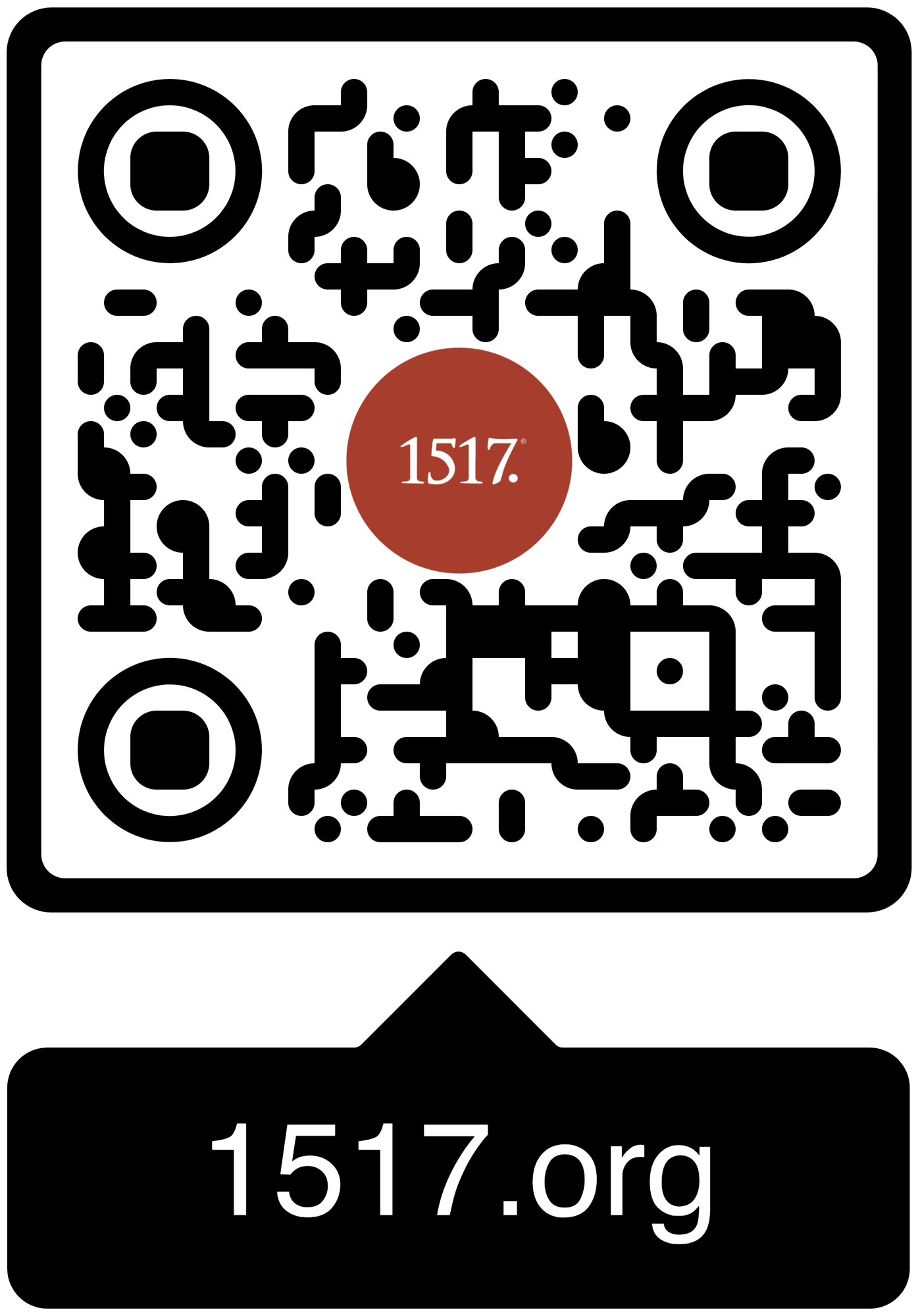The following entries are excerpts from Chad Bird’s new book, Untamed Prayers: 365 Daily Devotions on Christ in the Book of the Psalms (1517 Publishing, 2025), pgs. 311 and 335
09/29/25
Why did the church dedicate a day to St. Michael anyway? Who is he, and what does he do?
09/26/25
The Antichrist offers another continual presence. It is every whisper that tempts us toward autonomy, that tells us to carry it alone, that insists suffering is meaningless.
All Articles
Author
- All Authors
- 1517 Guest Contributor
- 1517 Publishing
- 1517 Staff
- A. A. Just Jr.
- A.J. Vega
- Aaron Boerst
- Adam Francisco
- Adam Stetson
- Amy Mantravadi
- Andrew Foss
- Anthony DiLiberto
- Blake Flattley
- Bob Hiller
- Bob Sundquist
- Bonnie Petroschuk
- Brad Soenksen
- Bradley Gray
- Brandon Hanson
- Brandon Pangman
- Brennan Manning
- Brian W. Thomas
- Bror Erickson
- Bruce Hillman
- C.S. Lewis
- Caleb Keith
- Chad Bird
- Charles E. Fry
- Christopher J. Richmann
- Cindy Koch
- CJ Armstrong
- Craig Donofrio
- Dan Chrismer
- Dan van Voorhis
- Dan Weber
- Daniel Deen
- Daniel Emery Price
- Daniel Stenberg
- David Clay
- David Rufner
- David Schmitt
- Debi Winrich
- Delwyn Campbell
- Dominick Santore
- Donavon Riley
- Edward Killian
- Elyse Fitzpatrick
- Erick Sorensen
- Gage Jordan
- Gerhard Forde
- Grant Klembara
- Greg Koukl
- Gretchen Ronnevik
- Haroldo Camacho
- Hermann Sasse
- Jacob Corzine
- Jacob Smith
- Jake Allstaedt
- Jared C. Wilson
- Jason Lane
- Jason Lang
- Jason Oakland
- Jay Sawrie
- Jeff Mallinson
- Jeffrey Pulse
- Jenifer Mohan
- Jessica Delgado
- Jessica Thompson
- Jim Nestingen
- Joel Fitzpatrick
- Joel Hess
- Joey Goodall
- John Bombaro
- John Bortulin
- John Chrysostom
- John T. Pless
- John W. Hoyum
- John Warwick Montgomery
- Jonathan Ruehs
- Jordan Spina
- Joshua Miller
- Justin Rossow
- Karen Stenberg
- Kathy Morales
- Katie Koplin
- Kelsi Klembara
- Ken Sundet Jones
- Kerri Tom
- Kevin Hale
- Kevin McClain
- Kyle G. Jones
- Larry D. Hughes
- Laura Bauer
- Luke Kjolhaug
- Magnus Persson
- Mariah Coward
- Mark Jasa
- Mark Mattes
- Mark Pierson
- Martin Luther
- Matt Johnson
- Matt Kroelinger
- Matt Popovits
- Michael Berg
- Michael Gibney
- Nicholas Hopman
- Nicholas Kallis
- Norman Nagel
- Paul Dunk
- Paul Koch
- Pete Lange
- Peter Nafzger
- Philip Bartelt
- Preston Sprinkle
- Raleigh Sadler
- Rick Ritchie
- RJ Grunewald
- Robert Farrar Capon
- Robert Kolb
- Rod Rosenbladt
- Roland Ehlke
- Ron Hodel
- Ryan Couch
- Ryan Matthias
- Ryan Stevenson-Cosgrove
- Ryan Tinetti
- Sam Leanza Ortiz
- Sam P. Schuldheisz
- Sarah Crowder
- Scott Davis
- Scott Keith
- Scott Landrum
- Seth Moorman
- Steve Byrnes
- Steve Kruschel
- Steven A. Hein
- Steven Paulson
- StoryMakers NYC
- Tanner Olson
- Tate Barber
- Ted Rosenbladt
- Travis Scholl
- Tyler Cronkright
- Uwe Siemon-Netto
- Valerie Thur
- Wade Johnston
- Walter Hwang
- Wayne Sender
- Zack James Cole
11/22/20
Jesus desires for us to watch. The question, however, is, “How do we watch for the return of Jesus?”
11/16/20
Love continues to gently but endlessly pursue the narrator, despite his persistence in pulling away in the opposite direction.
11/15/20
In this context where death looms large, Jesus reveals a kingdom where life looms even larger.
11/15/20
The resurrection of Jesus was the moment when the one true God appointed the Man through whom the whole cosmos would be brought back into its proper order. A man got us into this mess; the Man would get it out again.
11/15/20
The “New David” will manifest the power of the LORD and will not set Himself in opposition as did the false shepherds.
11/08/20
Preaching the end times purposes to solicit and strengthen faith in the Savior of the world who is at the same time the Creator and Re-creator of the world.
11/08/20
The tragedy of this parable is not the failure to serve. It is the failure to truly know your Savior.
11/08/20
There is life after death and, more gloriously, there is life after life after death, the resurrection of the body.
11/08/20
Obviously, the Day of the LORD looks frightening according to the words of Zephaniah the prophet. The question is: “For whom?”
11/06/20
Now more than ever, it's good to take a closer look at the Christian confession about evil, pain, and suffering.
11/01/20
Faithful preachers should remain steadfast in the biblical categories and terminology and preach the reality of death.
11/01/20
Because Israel has turned the eschatology of the Day of the LORD into “escapism” Amos turns that notion on its head in his prophecy.
1517 is a Christian non-profit (501(c)3) multi-media organization. Our mission is to declare and defend the Good News that we are forgiven and free on account of the death and resurrection of Jesus alone.





1517 grants permission for our free online resources to be printed, photocopied, and otherwise used freely for private and church use. We require that authorship and source (1517.org) are referenced and maintained. These resources may not be sold or included in any publications for sale.


